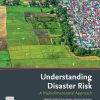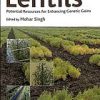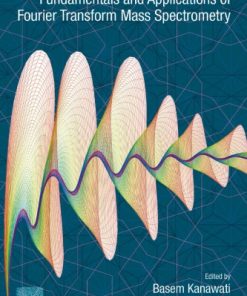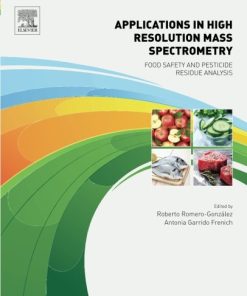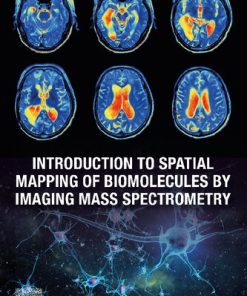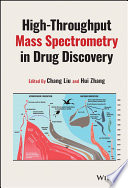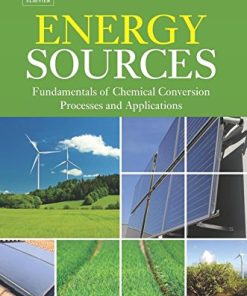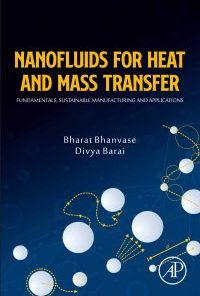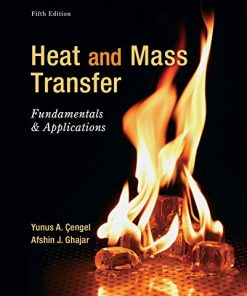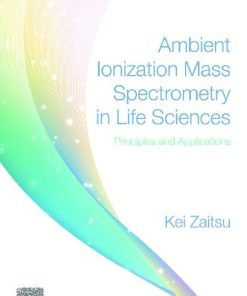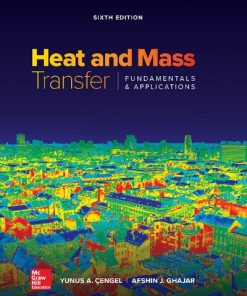(EBOOK PDF) Photoionization and Photo Induced Processes in Mass Spectrometry Fundamentals and Applications 1st Edition by Ralf Zimmermann, Luke Hanley 9783527682225 3527682228 full chapters
$50.00 Original price was: $50.00.$25.00Current price is: $25.00.
Photoionization and Photo Induced Processes in Mass Spectrometry Fundamentals and Applications 1st Edition by Ralf Zimmermann, Luke Hanley – Ebook PDF Instant Download/Delivery: 9783527682225, 3527682228
Full download Photoionization and Photo Induced Processes in Mass Spectrometry Fundamentals and Applications 1st Edition after payment
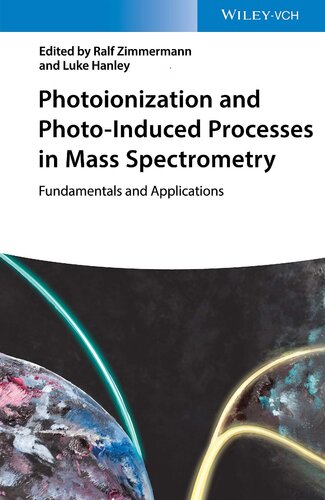
Product details:
• ISBN 10:3527682228
• ISBN 13:9783527682225
• Author:Ralf Zimmermann, Luke Hanley
Photoionization and Photo-Induced Processes in Mass Spectrometry
Fundamentals and Applications
Provides comprehensive coverage of laser-induced ionization processes for mass spectrometry analysis Drawing on the expertise of the leading academic and industrial research groups involved in the development of photoionization methods for mass spectrometry, this reference for analytical scientists covers both the theory and current applications of photo-induced ionization processes. It places widely used techniques such as MALDI side by side with more specialist approaches such as REMPI and RIMS, and discusses leading edge developments in ultrashort laser pulse desorption, to give readers a complete picture of the state of the technology. Photoionization and Photo-Induced Processes in Mass Spectrometry: Fundamentals and Applications starts with a complete overview of the fundamentals of the technique, covering the basics of the gas phase ionization as well as those of laser desorption and ablation, pulse photoionization, and single particle ionization. Numerous application examples from different analytical fields are described that showcase the power and the wide scope of photo ionization in mass spectrometry. -The first general reference book on photoionization techniques for mass spectrometry -Examines technologies and applications of gas phase resonance-enhanced multiphoton ionization mass spectrometry (REMPI-MS) and gas phase resonance ionization mass spectrometry (RIMS) -Provides complete coverage of popular techniques like MALDI -Discusses the current and potential applications of each technology, focusing on process and environmental analysis Photoionization and Photo-Induced Processes in Mass Spectrometry: Fundamentals and Applications is an excellent book for spectroscopists, analytical chemists, photochemists, physical chemists, and laser specialists.
Photoionization and Photo Induced Processes in Mass Spectrometry Fundamentals and Applications 1st Table of contents:
1 Fundamentals and Mechanisms of Vacuum Photoionization
1.1 Preface
1.2 Light
1.3 Photoabsorption
References
2 Fundamentals and Mechanisms of Resonance‐Enhanced Multiphoton Ionization (REMPI) in Vacuum and its Application in Molecular Spectroscopy
2.1 Introductory Remarks
2.2 Beginnings of REMPI
2.3 Principle of REMPI: Rate Equations and Quantification of Detection Efficiency
2.4 REMPI and Dissociation
2.5 Application of REMPI for Optical Spectroscopy
References
3 Analytical Application of Single‐Photon Ionization Mass Spectrometry (SPI‐MS)
3.1 VUV Light Sources
3.2 Lamp‐Based VUV Light Sources
3.3 Laser‐Based VUV Light Sources
3.4 Mass Spectrometry with Lamp or Laser‐Based VUV Light Sources
3.5 On‐line Analysis of Complex Mixtures by Single‐Photon Ionization (SPI) Mass Spectrometry
3.6 SPI‐MS in Hyphenated Applications
3.7 Ambient Monitoring
3.8 Commercial Solutions
References
4 Analytical Application of Resonance‐Enhanced Multiphoton Ionization Mass Spectrometry (REMPI‐MS)
4.1 Investigation of Model Flames
4.2 Applications to Internal Combustion Engines
4.3 Monitoring Combustion Process Emissions in an Industrial Environment
4.4 Further Applications of REMPI Mass Spectrometry
4.5 REMPI-MS in Hyphenated Analytical Systems
4.6 Commercial REMPI-MS Solutions and Applications
References
5 Probing Chemistry at Vacuum Ultraviolet Synchrotron Light Sources
5.1 Introduction
5.2 Combustion Chemistry
5.3 Isomer‐Resolved Studies of Elementary Chemical Reactions
5.4 Summary
Acknowledgments
References
6 Resonance Ionization Mass Spectrometry (RIMS): Fundamentals and Applications Including Secondary Neutral Mass Spectrometry
6.1 Introduction
6.2 Resonance Ionization Fundamentals
6.3 Reduction to Practice
6.4 Applications
6.5 Resources
References
7 Ultrashort Pulse Photoionization for Femtosecond Laser Mass Spectrometry
7.1 Introduction
7.2 Mechanisms of Ultrashort Pulse Photoionization
7.3 Studies of Amino Acids, Dipeptides, and C60 Leading to Advanced SFI Models
7.4 Volumetric Intensity Dependence and Multiply Charged Ions
7.5 Direct and Gas Chromatography‐Coupled Analysis of Explosives
7.6 Gas Chromatography‐Coupled Analysis of Polyaromatic Hydrocarbons, Pesticides, and Fragrances
7.7 Laser Secondary Neutral Mass Spectrometry
7.8 Conclusions
Acknowledgments
Disclosure Statement
References
8 Photoionization at Elevated or Atmospheric Pressure: Applications of APPI and LPPI
8.1 Introduction
8.2 Atmospheric Pressure Photoionization
8.3 Low‐Pressure Photoionization (LPPI)
8.4 Applications of APPI and LPPI
8.5 Conclusions
Acknowledgments
References
9 Fundamentals of Laser Desorption Ionization
9.1 Introduction
9.2 Experimental and Computational Parameters and Observables
9.3 General Mechanistic Considerations
9.4 Laser‐Induced Thermal or Acoustic Desorption of Neutrals from Metal Surfaces
9.5 Molecular Resonantly Enhanced Desorption: UV‐MALDI and IR‐LA
9.6 Nanophotonic Desorption
9.7 Femtosecond Laser Ablation
9.8 Internal Energy Transferred by LDI and Supersonic Cooling
9.9 Conclusions
Acknowledgments
Disclosure Statement
References
10 Applications of Laser Desorption Ionization and Laser Desorption/Ablation with Postionization
10.1 Nature of Samples and Information to be Gained from Laser Desorption and Laser Ablation Mass Spectrometry
10.2 Laser Ablation and Laser Desorption Ionization MS for Elemental Analysis
10.3 Nonimaging MALDI‐MS for Molecular Analysis
10.4 MALDI‐MS Imaging for Molecular Analyses
10.5 Example of Standard MALDI‐MS vs. Imaging Mode: Pseudomonas aeruginosa
10.6 MALDI Alternatives: Matrix Free, Ambient, Nanostructure Induced, and High Energy
10.7 Molecular LD/LA‐MS Beyond Nanosecond UV Lasers
10.8 Laser, Electrospray, and Other Postionization of Plumes Formed by LD/LA
10.9 Laser Ablation Sampling for Solid or Liquid Collection
10.10 Conclusions
Acknowledgments
Disclosure Statement
References
11 Laser Ionization in Single‐Particle Mass Spectrometry
11.1 Relevance of Atmospheric Aerosols for Climate and Health – The Single‐particle Perspective
11.2 Analysis of Individual Particles by Laser Ionization MS – Historical Development and Basic Principle
11.3 Ionization in Single‐Particle Mass Spectrometry: Laser Desorption/Ionization (LDI)
11.4 Ionization in SPMS: Laser Photoionization of Previously Desorbed Species
11.5 Instrumental Realizations
11.6 Data Evaluation
11.7 Applications
11.8 Commercial Laser Ionization Single-Particle Mass Spectrometry Systems
References
Index
End User License Agreement
People also search for Photoionization and Photo Induced Processes in Mass Spectrometry Fundamentals and Applications 1st:
photoionization and photo-induced processes
photoionization meaning
photoinhibition of photosynthesis
photoionization definition
photoionization
Tags:
Photoionization,PhotoInduced Processes,Ralf Zimmermann, Luke Hanley
You may also like…
Chemistry
Introduction to Spatial Mapping of Biomolecules by Imaging Mass Spectrometry Bindesh Shrestha
Forensic Science
Engineering - Chemical Engineering
Science (General)
Ambient Ionization Mass Spectrometry in Life Sciences: Principles and Applications 1st edition


